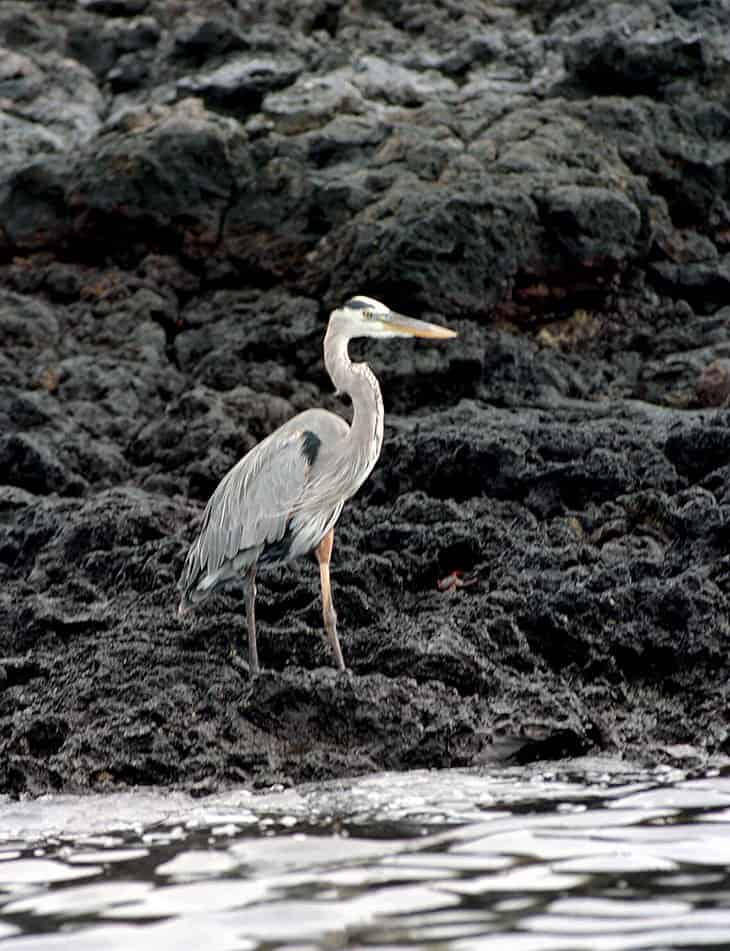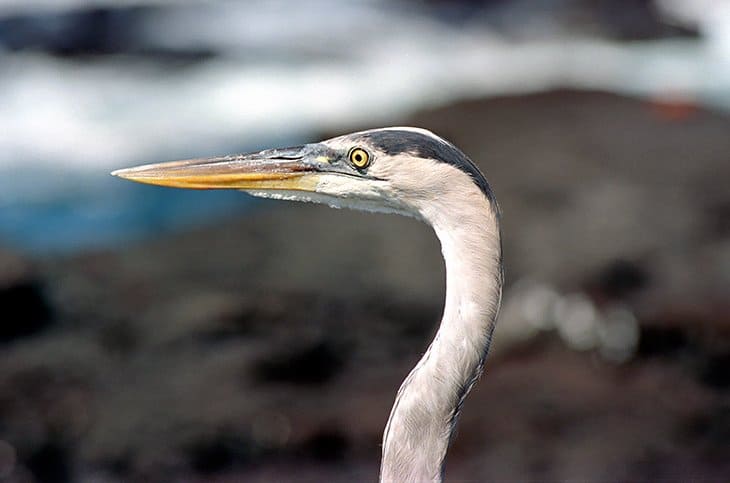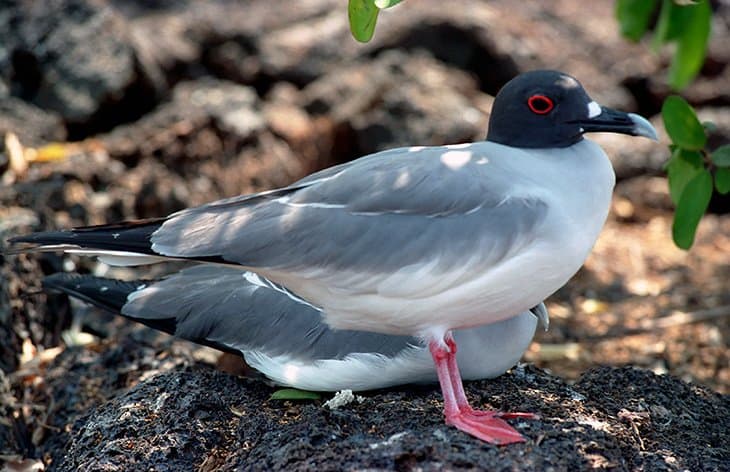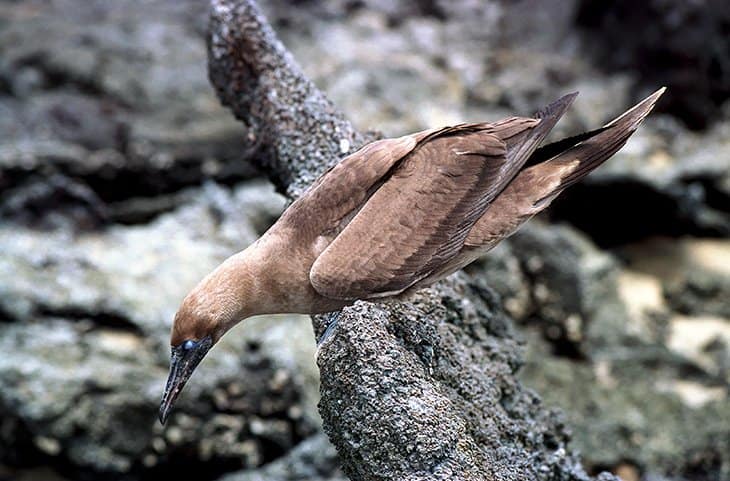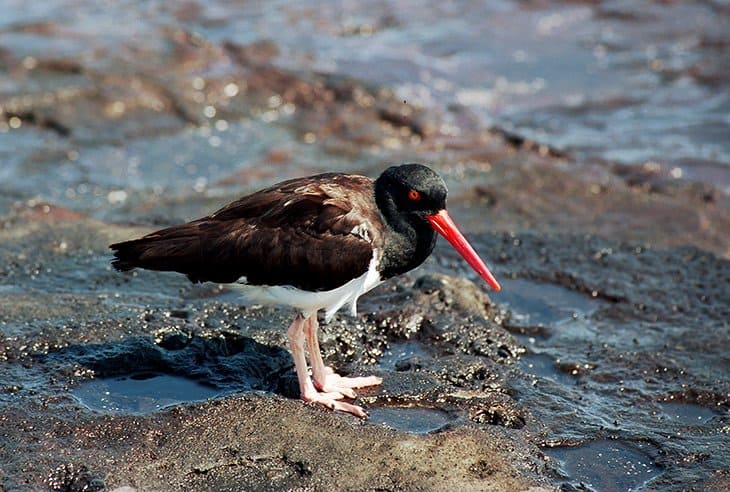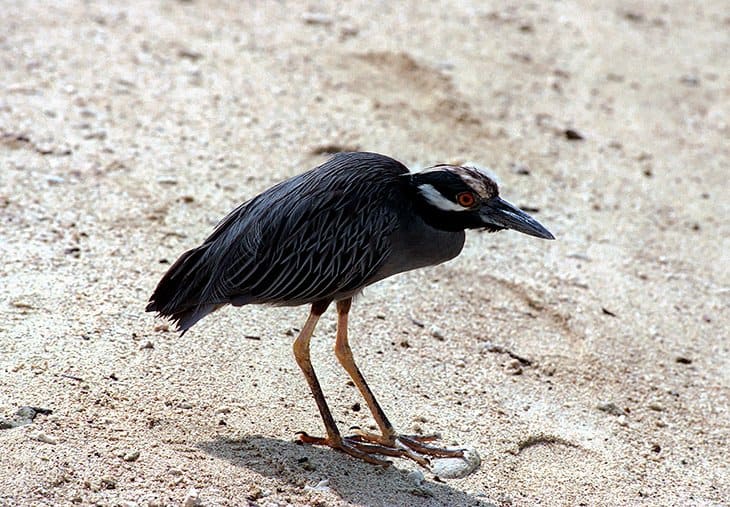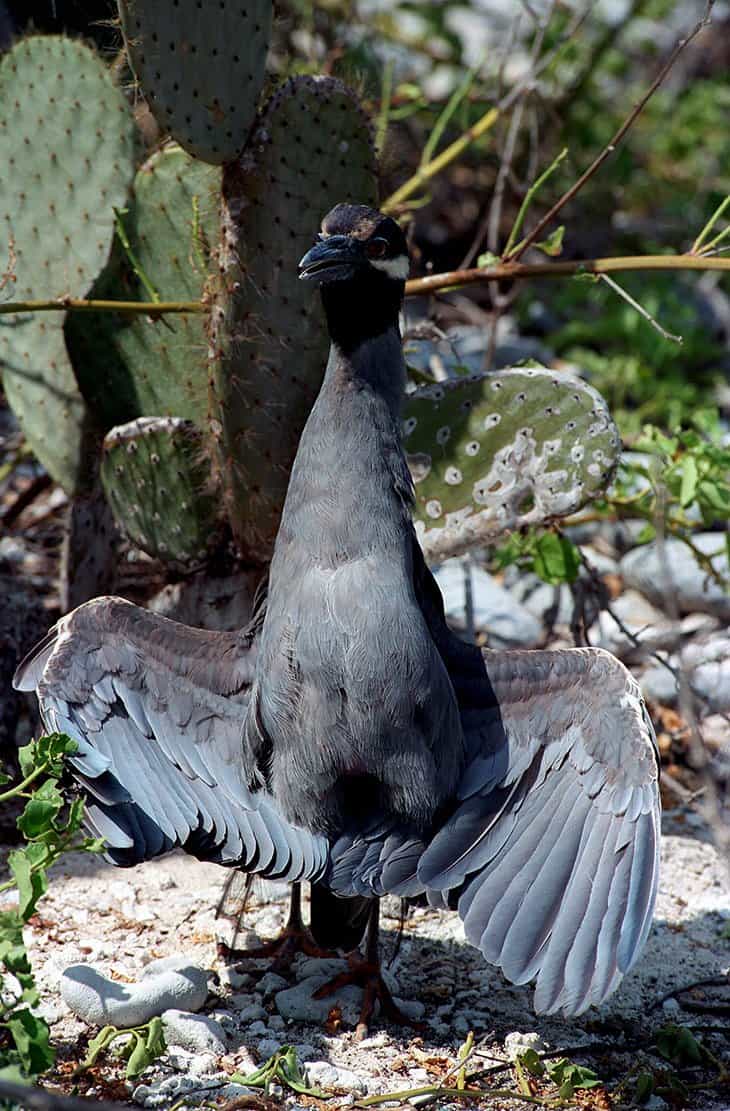Galapagos – Birds – Rails Herons Pelikans
Also among the waders of the archipelago are the American Oystercatcher, the Bahama Duck, the Beaked Whimbrel, and five Egrets: the well-camouflaged Lava Egret, the Common American Gray Heron, the Galápagos relatively rare Great Egret, the Nocturnal Crab Egret, and the Mountainous Cattle Egret from Santa Cruz. The herons feel at ease in the Galapagos Islands due to the extremely rich food supply.
Despite its sleek gray-feathered plumage, the common Fork-tailed Gull is one of the most attractive seabirds in the archipelago. The white chest, the three-colored beak, as well as the red feet and red dark circles on the black headdress give this nocturnal fish hunter an elegant look. The seagulls’ menu also includes tasty squid, which they snap right under the water surface after dark. To avoid the persecution of the frigate birds, they feed their young at an even later hour. Numerous specimens of year-round breeding birds can be found at many visitor sites of the islands.
The Rallenarten find on the beaches and the various cliff and reef areas a rich offer. In addition to the ubiquitous seabirds live on the islands and a variety of waders. This feathered extended family draws their food from mangrove forests, coastal saltwater lagoons, and from lapped beach shores.
Although the brown pelican is the smallest in comparison with its seven other conspecifics, it is still one of the largest seabirds in Galapagos. He usually broods on mangroves and other bushes in close proximity to the shore. Even if the perennial Shock-diver is not endemic in the archipelago, d. H. Thus, nothing really special, his absence at Anlegestegen, on dinghies and reelingen, would cause the deepest consternation. Pelicans belong to Galápagos like penguins in the Antarctic. One can approach the animals to small distances, since humans are not recognized as enemies or hunters.


